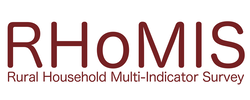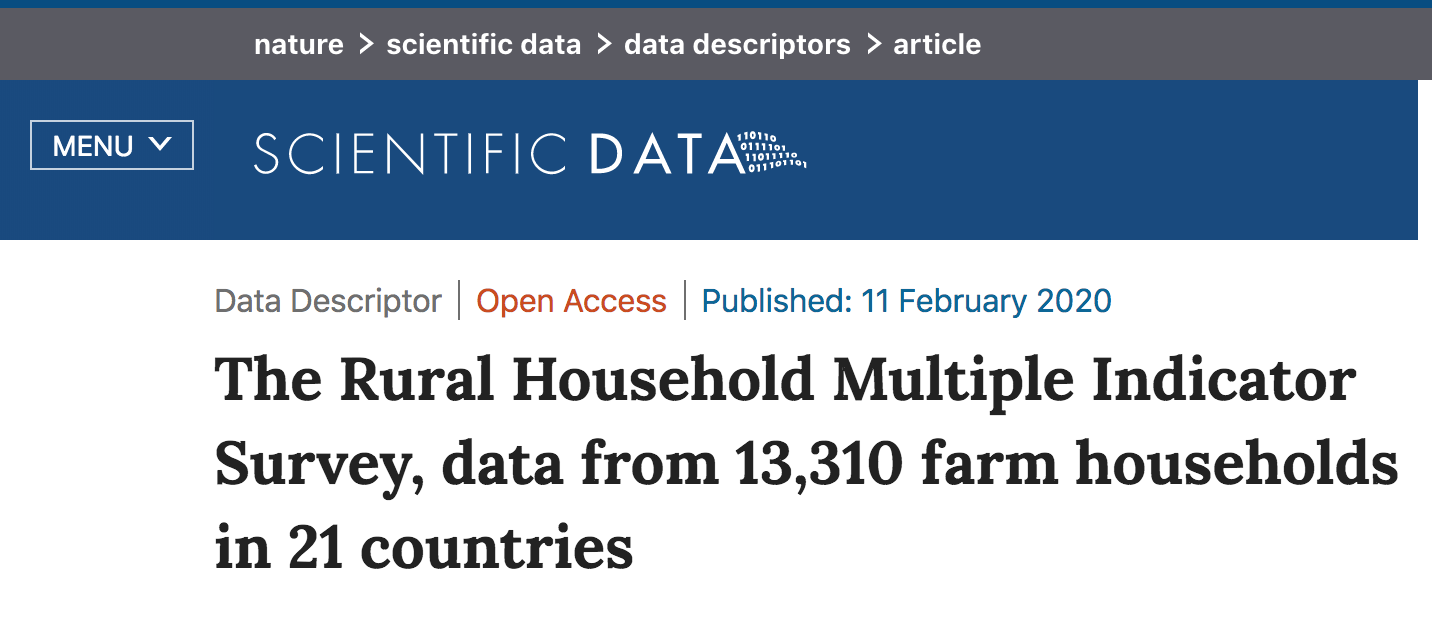|
Editor: We are excited today to announce our first public release of RHoMIS data and corresponding article in the journal Nature. The dataset includes surveys from over 13,000 households in 21 countries. In this article, Mark van Wijk shares about the release and how you can access the data. Arriving on the RHoMIS blog, you will not hear for the first time that RHoMIS was designed to improve the process of gathering information from farming households in the rural developing world. We do this through publicly available open-source software, resulting in a smooth and rapid questionnaire, which gathers considerable detail in a relatively short amount of time. This work is now generating a lot of data of smallholder farm households, their agricultural systems and their livelihoods. We are very excited to announce the publication of the first batch of harmonized RHoMIS data.
We have also published a detailed scientific manuscript, in Nature’s Scientific Data. The paper describes the data set and the data quality control measures we have in place in detail. The journal article can be viewed here. This publication is a first (but certainly not last!) of its kind for us, and is a great example of our drive to share and make publicly available all the tools and information we have generated over the last five years to further the agricultural development oriented research. The data collection efforts presented in this publication took place during the years 2015, 2016, 2017 and the first three months of 2018. The data were collected by academic, research for development, and development organisations in a wide range of different projects, proving that the harmonized approach we proposed can be successfully implemented across a diverse range of settings and interests. We hope this data is widely used to identify sustainable pathways towards improved food security of these vulnerable households, and underpin strategic studies trying to identify the drivers of diverse diets and possible trade offs between agricultural production intensification and key welfare indicators. Nature's Scientific Data journal today published our article on the harmonized dataset. We ourselves used the raw data and indicators already for a wide range of studies at site level, for regional analyses and even for continental analysis. Different aspects of smallholder households have been analysed, including gender equity, dietary diversity, nutritional gaps, poverty and greenhouse gas emissions in relation to production intensification, subsistence- versus market-orientated strategies, and on-farm vs. off-farm activities. A key opportunity for the future is to make these RHoMIS data ‘talk’ to other datasets, either remote sensing based, census data based or climate data based, to gain better insight in the opportunities to improve the welfare of smallholder households and to better match portfolios of new technologies to the needs of these vulnerable people. RHoMIS is an on-going initiative, and we welcome interested parties to the community of practice.
Records continue to be submitted to the central data repository: in the latter part of 2018 more than 10,000 households were additionally interviewed, and their information added to the database. The RHoMIS team often works intensively with users of the tool in all kinds of applications to ensure consistency in the information collected and to make sure our analysis software runs smoothly, but a new exciting development is the ‘Do it Yourself’ RHoMIS, that everybody can use. Researchers are already using the DIY setup and contributing to the central data repository. We hope this continues as our community of practice expands so that we can continue to make these data publicly available in new releases in Scientific Data, produce joint scientific outputs, and open this rich vein of information to improve lives and save the planet.
0 Comments
Your comment will be posted after it is approved.
Leave a Reply. |
RHoMIS BlogThe RHoMIS blog is written by a community of practice. The COP is made up of RHoMIS users and creators from across the world. Here we share their stories of how RHoMIS is helping to record and analyse household data. Archives
May 2020
Categories
All
|




 RSS Feed
RSS Feed